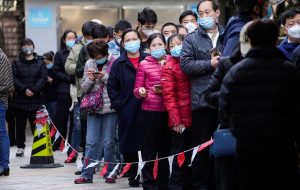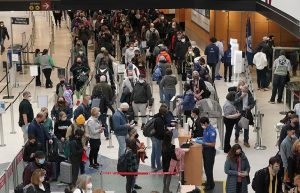30-03-2022
GENEVA/ LONDON/ NEW YORK: BA.2, a sub-variant of the Omicron coronavirus variant, has now become dominant globally, representing nearly 86 percent of all sequenced cases, according to the World Health Organization.
 First detected in the early days of January, the sub-variant is even more transmissible than its highly contagious Omicron siblings, BA.1 and BA.1.1.
First detected in the early days of January, the sub-variant is even more transmissible than its highly contagious Omicron siblings, BA.1 and BA.1.1.
Here’s what we know about BA.2, often referred to as the “stealth variant”.
Why is it called the ‘stealth variant’?
That’s because BA.2 is slightly harder to track.
A missing gene in BA.1 allowed it to be tracked by default through a common PCR test. BA.2 and another sibling, BA.3 – also increasing in prevalence but currently at low levels, can only be found by genomic sequencing.
Even though BA.2 is more infectious than other Omicron sub-variants, according to studies, evidence suggests so far that it is not more likely to cause severe disease.
Are vaccines effective against BA.2?
As with the other Omicron variants, vaccines are less effective against BA.2 than they are against other variants like Alpha or the original strain of coronavirus, and protection declines over time.
 However, according to UK Health Security Agency data, protection is restored by a booster jab, particularly for preventing hospitalization and death.
However, according to UK Health Security Agency data, protection is restored by a booster jab, particularly for preventing hospitalization and death.
Can you catch BA.2 if you already had BA.1?
A key concern about BA.2 was whether it could re-infect people who had already had BA.1, particularly as a number of countries seemed to be experiencing “double peaks” in infection rates surprisingly close together but data from the UK and Denmark shows that while Omicron can re-infect people who had other variants, such as Delta, only a handful of BA.2 reinfections in people who had BA.1 have been found so far among tens of thousands of cases.
Scientists say a possible explanation for the recent rise in BA.2 could be that many countries have lifted public health interventions.
“In some ways, it could just be that BA.2 was the variant that was circulating when all these people stopped wearing masks,” said Dr Andrew Pekosz, a virologist at the Johns Hopkins Bloomberg  School of Public Health.
School of Public Health.
Eric Topol, director of the Scripps Research Translational Institute, said it was “a little too early” to call whether the US too would see a significant BA.2 wave but whatever the reason for BA.2’s rise, scientists say it is a reminder that the virus continues to cause harm, particularly among unvaccinated, under-vaccinated and vulnerable populations.
“It is still a huge public health problem and it is going to continue to be,” said Mark Wool-house, an epidemiologist at the University of Edinburgh. (Int’l Monitoring Desk)
 Pressmediaofindia
Pressmediaofindia




